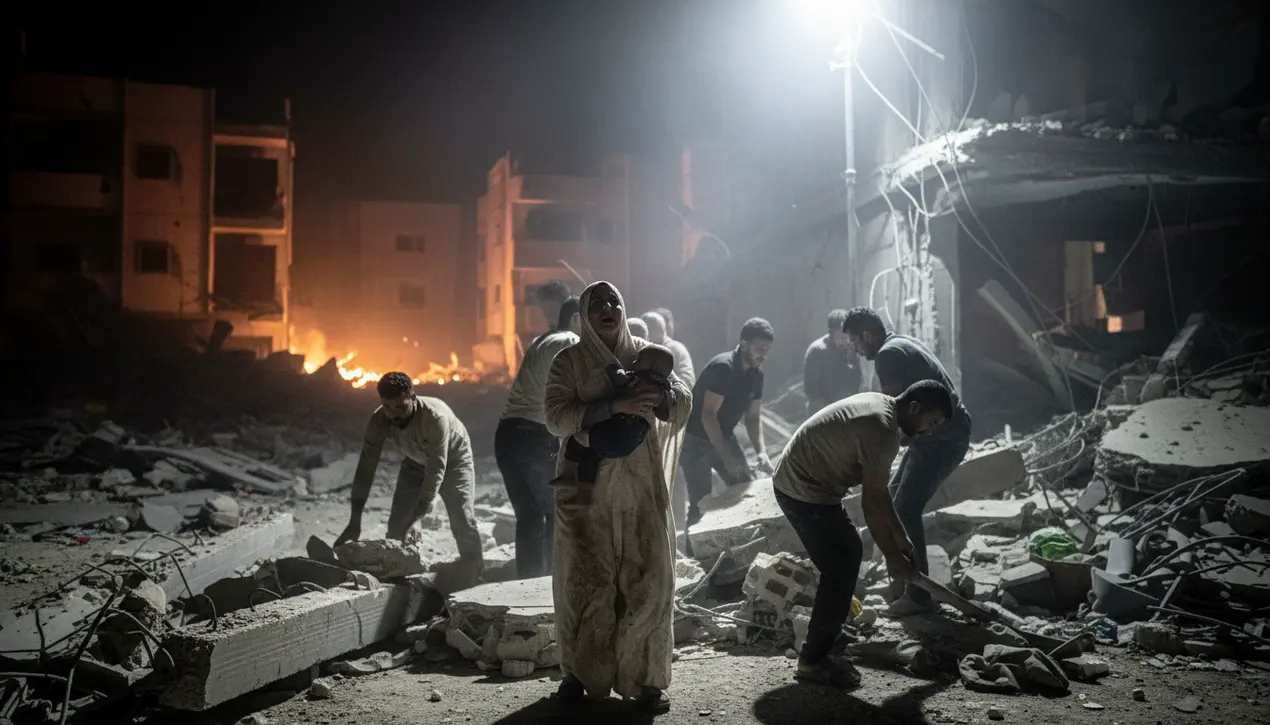
Politicsconflict & defenseMilitary Operations
Israeli Airstrikes in Gaza Kill 25, Says Health Ministry.
OL
Oliver Scott
2 days ago7 min read5 comments
The fragile five-week ceasefire in Gaza shattered with the abrupt finality of a controlled detonation, as Israeli airstrikes reportedly killed 25 people, according to the local Health Ministry, a move the Israeli military framed as a direct response to Hamas gunmen opening fire on its soldiers. This immediate tactical response, however, must be analyzed within the broader strategic calculus of risk and escalation.The initial violation, a localized exchange of gunfire, represents a classic low-grade trigger, but the decision to respond with significant aerial firepower signals a deliberate recalibration of the conflict's risk profile, moving it from a simmering stalemate back to a high-intensity flashpoint. From a political risk perspective, this event is not an isolated incident but a pressure release valve failing, indicating that the underlying tensions—the unresolved status of Hamas's governance, the Israeli government's domestic political pressures, the humanitarian crisis in Gaza—were too volatile to be contained by a temporary truce.The immediate consequence is a predictable spiral: Palestinian casualties fuel public outrage, strengthening Hamas's narrative of resistance, while in Israel, the government demonstrates resolve to a domestic audience that may perceive any tolerance of ceasefire violations as weakness. The secondary and tertiary risks are where the scenario becomes critically unstable; we must now model for the probability of retaliatory rocket fire from Gaza, which would trigger a more extensive Israeli air campaign, potentially drawing in Lebanese Hezbollah on Israel's northern border in a coordinated, multi-front engagement.Furthermore, the international dimension cannot be ignored. The U.S. administration, deeply invested in regional de-escalation and Saudi-Israeli normalization, now faces a severe complication, while Arab states that had been cautiously engaging with Israel will be forced into a more critical public posture. The key variable to watch is not just the body count from this single strike, but the subsequent 24-48 hour window: does the violence de-escalate through back-channel communications, or does it cross a threshold that makes a return to the previous ceasefire terms impossible, effectively resetting the conflict clock to zero and opening a new, more destructive phase of warfare with profound humanitarian and geopolitical repercussions?.
#editorial picks news
#Israeli strikes
#Gaza
#ceasefire violation
#Hamas targets
#Palestinian casualties
Stay Informed. Act Smarter.
Get weekly highlights, major headlines, and expert insights — then put your knowledge to work in our live prediction markets.
Comments
Loading comments...
© 2025 Outpoll Service LTD. All rights reserved.